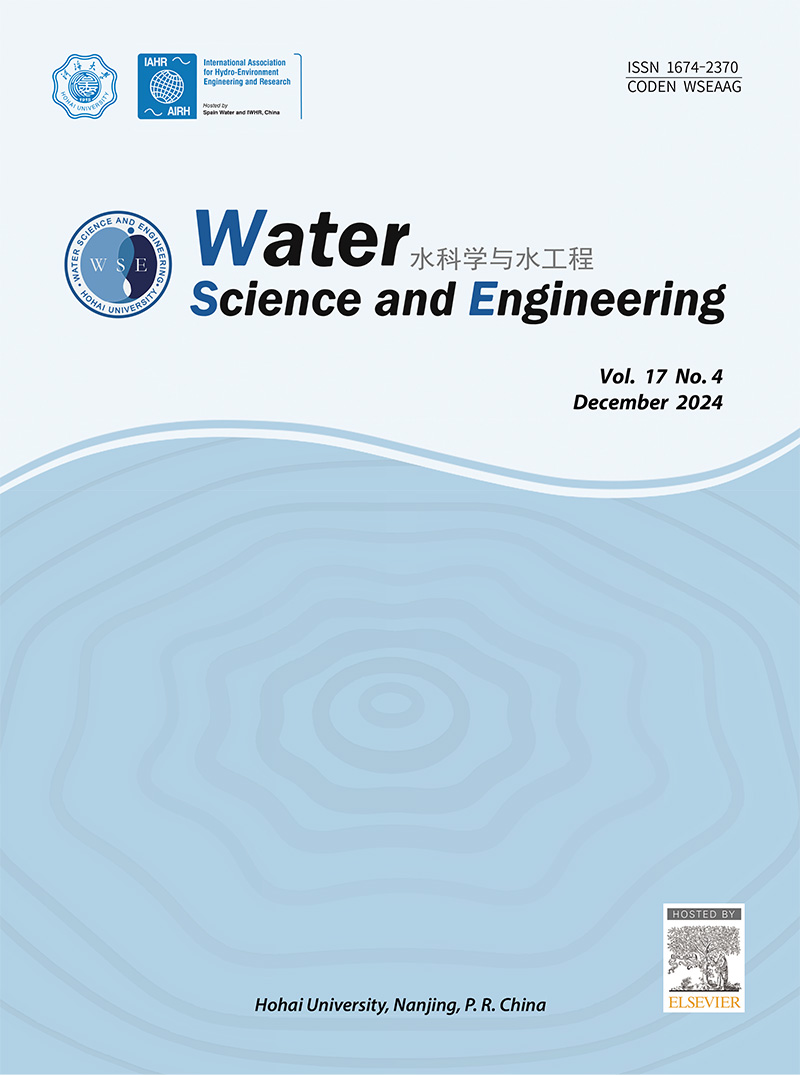Comparative experimental study of bisphenol A degradation via sulfate radical and electron transfer mechanisms in persulfate-activated advanced oxidation processes
IF 4.3
Q1 WATER RESOURCES
引用次数: 0
Abstract
Addressing the growing challenge of water contamination, this study comparatively evaluated a persulfate (PDS) system activated by non-radical nitrogen-doped carbon nanotubes (N-CNTs) versus a PDS system activated by radical-based iron (Fe2+), both used for the degradation of bisphenol A (BPA). The N-CNTs/PDS system, driven by the electron transfer mechanism, achieved remarkable 90.9% BPA removal within 30 min at high BPA concentrations, significantly outperforming the Fe2+/PDS system, which attained only 38.9% removal. The N-CNTs/PDS system maintained robust degradation efficiency across a wide range of BPA concentrations and exhibited a high degree of resilience in diverse water matrices. By directly abstracting electrons from BPA molecules, the N-CNTs/PDS system effectively minimised oxidant wastage and mitigated the risk of secondary pollution, ensuring efficient utilisation of active sites on N-CNTs and sustaining a high catalytic rate. The formation of the N-CNTs-PDS∗ complex significantly enhanced BPA degradation and mineralisation, thereby optimising PDS consumption. These findings highlight the unparalleled advantages of the N-CNTs/PDS system in managing complex wastewater, offering a promising and innovative solution for treating complex industrial wastewater and advancing environmental remediation efforts.
过硫酸盐活化深度氧化过程中硫酸盐自由基和电子转移降解双酚A的对比实验研究
为了应对日益严峻的水污染挑战,本研究比较了非自由基氮掺杂碳纳米管(N-CNTs)激活的过硫酸盐(PDS)体系和自由基基铁(Fe2+)激活的过硫酸盐(PDS)体系,这两种体系都用于降解双酚a (BPA)。在电子传递机制的驱动下,N-CNTs/PDS体系在高BPA浓度下,30 min内的BPA去除率达到了90.9%,明显优于Fe2+/PDS体系,后者的去除率仅为38.9%。N-CNTs/PDS系统在广泛的BPA浓度范围内保持稳健的降解效率,并在不同的水基质中表现出高度的弹性。通过直接从BPA分子中提取电子,N-CNTs/PDS系统有效地减少了氧化剂的浪费,降低了二次污染的风险,确保了N-CNTs上活性位点的有效利用,并保持了高催化速率。N-CNTs-PDS *复合物的形成显著增强了BPA的降解和矿化,从而优化了PDS的消耗。这些发现突出了N-CNTs/PDS系统在管理复杂废水方面的无与伦比的优势,为处理复杂工业废水和推进环境修复工作提供了一种有前景的创新解决方案。
本文章由计算机程序翻译,如有差异,请以英文原文为准。
求助全文
约1分钟内获得全文
求助全文
来源期刊

Water science and engineering
WATER RESOURCES-
CiteScore
6.60
自引率
5.00%
发文量
573
审稿时长
50 weeks
期刊介绍:
Water Science and Engineering journal is an international, peer-reviewed research publication covering new concepts, theories, methods, and techniques related to water issues. The journal aims to publish research that helps advance the theoretical and practical understanding of water resources, aquatic environment, aquatic ecology, and water engineering, with emphases placed on the innovation and applicability of science and technology in large-scale hydropower project construction, large river and lake regulation, inter-basin water transfer, hydroelectric energy development, ecological restoration, the development of new materials, and sustainable utilization of water resources.
 求助内容:
求助内容: 应助结果提醒方式:
应助结果提醒方式:


